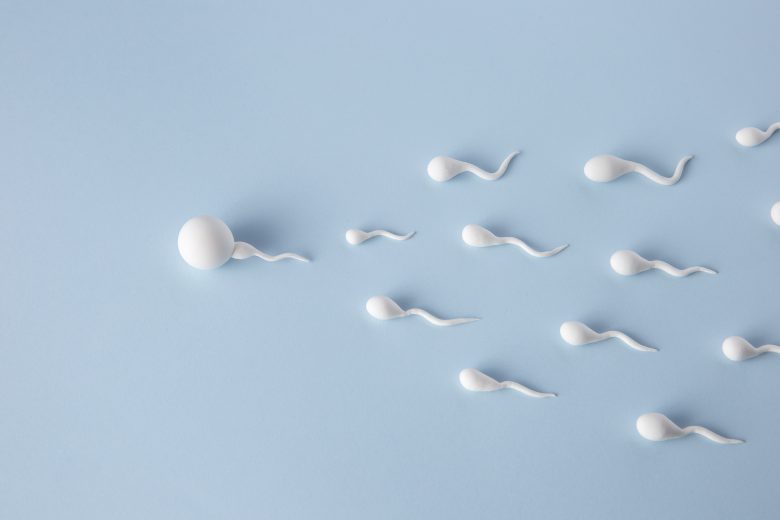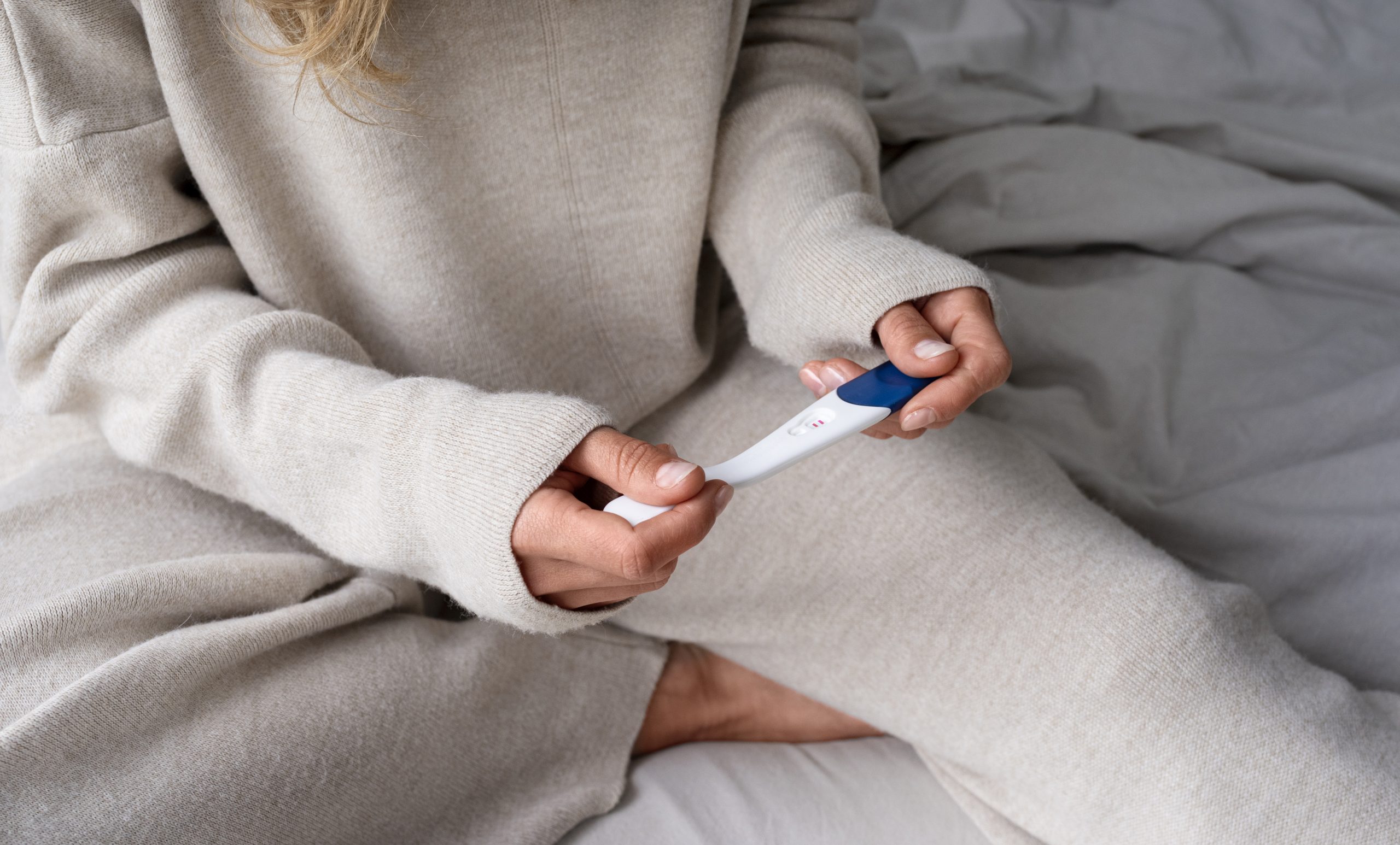Low Sperm Motility – Causes and Fertility Treatments

Low sperm motility, often termed asthenozoospermia, is a primary factor in many cases of male infertility. Even with an adequate sperm count, sperm that swim poorly may never make it to the egg. Fortunately, with targeted lifestyle changes, medical interventions, and assisted reproductive technologies, couples facing this challenge still have a strong chance of achieving pregnancy. Below, we discuss the definitions, causes, and treatment options associated with low sperm motility, including how it affects fertility and the steps you can take to improve sperm movement.
Understanding Sperm Motility
Sperm motility refers to the ability of sperm to move effectively through the female reproductive tract to fertilize an egg. In other words, it measures how well individual sperm cells “swim.” This characteristic is an important factor in evaluating overall male fertility, since moving sperm must travel a considerable distance to reach and penetrate the egg.
Types of Sperm Motility Issues
There are different types of sperm motility issues:
-
Progressive motility: Sperm swim mostly in a straight line (or wide arcs) and can move forward over a distance. This type of motile sperm is crucial for getting pregnant, as it ensures the sperm can “progress” toward the egg.
-
Non-progressive motility: Sperm are moving (they may wiggle or swim in tight circles), but not moving forward in a meaningful way
-
Immotile sperm: Sperm do not show any movement at all.
Sperm Motility vs. Sperm Count
While “sperm motility” focuses on how sperm move, “sperm count” (or sperm concentration) addresses how many sperm are present in one milliliter of semen. Both are important in assessing male infertility, and both can appear on standard fertility testing reports:
-
Low sperm motility alone can be a cause of infertility, because even if there are enough sperm (a normal or high sperm count), those sperm may not swim properly to fertilize the egg.
-
Low sperm count (oligospermia) means fewer sperm are available to fertilize the egg, which lowers the chance of pregnancy.
-
It is possible that a man can have issues with both lower sperm motility and low sperm count, further reducing fertility.
In general, men with healthy sperm exhibit both strong forward movement (progressive motility of at least 32–40%) and a normal sperm concentration above ~15 million/ml. However, each laboratory and the World Health Organization (WHO) may define reference ranges differently. Ultimately, the goal is enough sperm that can swim well enough to conceive naturally or with assistance such as IUI (intrauterine insemination) or IVF treatment (in vitro fertilization).
How Does Low Sperm Motility Affect Fertility?
A sperm mobility issue can have a direct impact on whether a couple can achieve a successful pregnancy. If sperm do not swim vigorously (particularly in a forward direction), reaching and penetrating the egg becomes more difficult. This situation is often referred to as “poor sperm motility” or asthenozoospermia. It is considered one of the most common causes of low male fertility potential, alongside low sperm count and abnormal sperm morphology.
When motility is considered low (e.g., less than 32% progressive motility), couples may experience challenges getting pregnant. Many cases of male infertility are caused by low sperm movement, making it harder for sperm to pass through cervical mucus, travel to the fallopian tube, and fertilize the egg. Doctors often recommend a semen analysis to diagnose low sperm motility and to evaluate other parameters like sperm shape and count.
When Low Sperm Motility and Low Sperm Count Co-Exist
When low motility occurs together with low sperm count, fertility issues are typically more pronounced. Even if the individual sperm are motile, having fewer sperm in the ejaculate decreases the odds that a viable sperm will make it all the way to fertilize the egg. This combination is sometimes called oligoasthenospermia, and it can affect sperm quality severely.
-
Poor sperm motility alone means the sperm have trouble swimming.
-
Low sperm count means there are not enough sperm in the first place.
Causes of Low Sperm Motility
Low sperm motility is typically multifactorial, involving a blend of medical, lifestyle, and environmental factors. Additionally, underlying molecular mechanisms in the sperm tail—particularly those regulating the flagellar beat—can be disrupted, causing sperm to swim poorly. Below is an overview of these potential causes.
Medical Causes of Low Motility
Hormonal and Signaling Pathways
-
Key regulatory mechanisms: Sperm motility depends on calcium (Ca²⁺) signaling and the cyclic adenosine monophosphate (cAMP)-dependent protein kinase (PKA) pathway. When these pathways are disrupted, sperm may fail to hyperactivate or move progressively.
-
Calcium pathway: Proper calcium influx (e.g., via CatSper channels) is essential for the switch from simple forward motility to the more forceful, asymmetric motion (hyperactivation) required for fertilization.
-
cAMP/PKA pathway: Bicarbonate and Ca²⁺ can stimulate the soluble adenylyl cyclase (sAC), increasing cAMP. This, in turn, activates PKA, which phosphorylates proteins (like dynein arms) important for flagellar beating. A deficiency in this signaling (e.g., low cAMP or PKA malfunction) can reduce sperm motility significantly.
-
Hormonal imbalances: Altered levels of testosterone, follicle-stimulating hormone (FSH), or luteinizing hormone (LH) may hamper sperm production or disrupt normal regulatory pathways for motility.
Structural Defects in Sperm Tail
-
Axonemal abnormalities: The sperm tail’s axoneme is made up of microtubules, dynein arms, and regulatory complexes. Genetic or structural defects can impair the normal sliding of microtubules, resulting in fewer sperm being motile.
-
Primary ciliary dyskinesia (PCD) or Kartagener’s syndrome: Lack of dynein arms, radial spoke defects, or central pair anomalies often lead to immotile or poorly motile sperm.
-
Fibrous sheath dysplasia: Hyperplasia or malformation of the fibrous sheath can negatively affect the beat pattern of the sperm’s tail.
-
Mitochondrial dysfunction: The sperm midpiece houses mitochondria critical for ATP production; mutations in mitochondrial DNA or defective mitochondrial sheaths decrease the energy required for active sperm movement.
-
Epididymal dysfunction: Problems in the epididymis—where sperm mature and gain motility—such as blocked ducts or insufficient secretion of epididymal components (carnitine, α-glucosidase) can lead to low sperm motility.
Immune and Inflammatory Conditions
-
Antisperm antibodies: In some men, the immune system produces antibodies that attach to sperm, inhibiting their forward progression. A MAR test can detect such antibodies.
-
Infections: Chronic prostatitis, sexually transmitted infections, or genitourinary inflammation may alter the seminal fluid environment or damage sperm tail structures.
Oxidative Stress
-
Reactive oxygen species (ROS) are naturally produced by sperm and leukocytes. In moderate amounts, they are crucial for sperm function (e.g., capacitation and hyperactivation). However, elevated ROS levels—due to infection, varicocele, or other pathologies—can overwhelm antioxidant defenses, damage sperm membranes and axonemal proteins, and thus reduce motility.
Varicocele
-
Enlarged veins in the scrotum may raise local temperature and reduce oxygen delivery, adversely affecting both sperm count and motility
Lifestyle Factors that Affect Fertility
Smoking, Alcohol, and Substance Use
-
Smoking introduces toxins that may increase oxidative stress and damage the sperm’s regulatory pathways for motility.
-
Excessive alcohol consumption can disrupt hormone balance and reduce energy supply for sperm cells, leading to poor motility
Diet, Obesity, and Physical Activity
-
Diets high in saturated fat and low in antioxidants may exacerbate oxidative stress, impacting sperm’s ability to move.
-
Obesity changes hormone profiles (testosterone, estrogen) and often impairs sperm production and motility.
-
Sedentary lifestyle can undermine metabolic and circulatory health, indirectly affecting sperm motility.
Heat Exposure and Stress
-
Frequent heat (hot baths, saunas, or tight underwear) elevates scrotal temperature, potentially hampering normal sperm function.
-
Chronic psychological stress can alter hormone release (cortisol, gonadotropins) and increase ROS production, reducing motility.
Antioxidant Deficiencies
-
Low dietary intake of vitamins (e.g., C and E) and other antioxidants can allow ROS to accumulate, negatively affecting the flagellar movement of sperm
Environmental Influences
Chemical Exposures
-
Endocrine-disrupting chemicals (EDCs) (pesticides, plasticizers like phthalates, bisphenol A) can interfere with hormone signaling and damage sperm DNA, resulting in decreased motility.
-
Heavy metals (lead, cadmium) or industrial solvents also correlate with low sperm quality; by generating excess ROS, they can impair the regulatory enzymes crucial for the sperm tail’s axoneme function.
Air Pollution and Toxins
-
Urban or industrial pollutants have been linked to reduced semen parameters, including motile sperm counts. Chronic exposure may contribute to long-term oxidative damage and sperm immobility.
Osmotic and pH Stressors
-
Rapid changes in osmolarity or pH can disrupt normal sperm volume regulation (via aquaporins, ion channels) and hamper forward motility.
-
An overly viscous or abnormal seminal fluid environment (e.g., from infection or inflammation) likewise inhibits a sperm’s ability to swim effectively.
In short, low sperm motility can arise from intricate problems in the molecular machinery (Ca²⁺, cAMP-PKA, and axonemal proteins), medical conditions (infections, hormonal disturbances, or structural anomalies), lifestyle factors (smoking, poor diet, obesity), and environmental hazards (toxicants, pollutants). Because motile sperm are essential to achieve fertilization, pinpointing the exact cause of male infertility in asthenozoospermic patients is key to devising a successful treatment strategy—whether that means removing harmful exposures, optimizing health habits, or pursuing assisted reproductive techniques.
Signs and Diagnosis of Low Sperm Motility
Once sperm motility falls below a certain threshold, couples may struggle with getting pregnant—often prompting an investigation into male infertility factors. However, men may experience few outward signs before being diagnosed. Below are common signals and the main diagnostic approach.
Recognizing Possible Symptoms
-
Difficulty Conceiving: One of the earliest clues of poor sperm motility is trouble achieving pregnancy after trying for several months (or more). Although many conditions can result in infertility, low sperm motility is a prime suspect when female factors are ruled out.
-
Hormonal Changes or Sexual Dysfunction: Sometimes, underlying medical conditions (e.g., low testosterone or thyroid issues) can affect sperm motility indirectly. Men might notice decreased libido, fatigue, or difficulties with sexual performance, though these are non-specific symptoms.
-
Signs of Varicocele or Infection: A varicocele (enlarged veins in the scrotum) can raise scrotal temperature and reduce motility; it may be detected as a swelling or “bag of worms” feeling. Infections or inflammations, such as prostatitis, may present with discomfort or urinary changes.
-
No Noticeable Symptoms: It is important to note that many men with low sperm motility have no obvious physical symptoms. Regular check-ups and timely fertility testing often become the only way to uncover the cause of male infertility related to motility issues.
Semen Analysis – The Key Test
A semen analysis is the primary diagnostic procedure to evaluate a man’s sperm motility, count, and morphology. The sample is usually produced via masturbation in a clinical setting, though some clinics may allow home collection or specialized condoms during intercourse. In the laboratory, specialists assess the number of moving sperm and the quality of that movement (particularly progressive vs. non-progressive motility). According to World Health Organization guidelines, progressive motility below about 32–40% often qualifies as low sperm motility. Most clinicians recommend repeating the test after several weeks to account for variations in sperm parameters before confirming a diagnosis. If consistently low motility is detected, additional evaluations may include checking hormones, performing a physical exam to rule out varicocele, or exploring potential lifestyle and environmental contributors to poor sperm movement.
How to Improve Sperm Motility
Optimizing sperm motility involves a balance of general health measures and targeted strategies. Below are key evidence-based steps to help sperm move more efficiently.
Lifestyle Changes to Boost Male Fertility
-
Moderate Exercise: Regular aerobic activity (e.g., 30–50 minutes, three times a week) may increase sperm count and motility. Avoid overly intense regimens that could lower testosterone and reduce sperm quality.
-
Limit Alcohol and Quit Smoking: Heavy drinking (>10 drinks/week) correlates with lower sperm health. Smokers often have decreased sperm count and motility; quitting can show benefits in as little as three months.
-
Manage Stress: Chronic stress disrupts hormone balance essential for healthy sperm. Techniques like mindfulness, therapy, or moderate exercise can help stabilize testosterone levels.
-
Eat a Nutritious Diet: Emphasize fruits, vegetables, whole grains, and lean proteins. Limit processed foods, trans fats, and excessive protein intake. Walnuts and antioxidant-rich foods may be especially beneficial.
-
Reduce Excess Heat: Avoid tight underwear, extended hot-tub sessions, or placing laptops on your lap. Keeping the testicular area cool supports better sperm production and motility.
Supplements & Vitamins
-
Antioxidants (e.g., Vitamin C): Help combat oxidative stress, a leading cause of reduced sperm motility. Doses of ~1,000 mg/day, especially in men exposed to toxins, have shown positive results.
-
Coenzyme Q10 (CoQ10): Linked with higher sperm count and improved motility when taken at 200–400 mg/day. Generally safe; mild GI side effects can occur.
-
D-Aspartic Acid (D-AA): May boost testosterone in men with low baseline levels. Results vary; consult a healthcare provider before use.
Adopting these lifestyle habits and considering targeted supplements can create a healthier environment for sperm to develop and move effectively. Always consult a qualified medical professional before starting any new supplement regimen or making major lifestyle changes.
Fertility Treatment Options for Men with Low Sperm Motility
When lifestyle changes and supplements alone are not enough to overcome low sperm motility, assisted reproductive techniques offer more direct ways to achieve pregnancy. Below are the most commonly recommended procedures tailored to help men whose sperm have trouble reaching and fertilizing the egg naturally.
IUI (Intrauterine Insemination)
Intrauterine insemination is often the first-line procedure when sperm motility is moderately compromised. A semen sample is collected and specially prepared in the lab to isolate and concentrate the most viable sperm. During the female partner’s fertile window, these sperm are placed directly into the uterus via a thin catheter. By shortening the distance they need to travel, IUI increases the likelihood of fertilization for couples affected by low motility.
IVF (In Vitro Fertilization)
In vitro fertilization involves stimulating the ovaries to produce multiple eggs, which are then retrieved and fertilized in a controlled laboratory setting. Because sperm do not have to travel through the reproductive tract, IVF can be particularly helpful for men with significant motility issues. Once fertilized, the resulting embryo(s) are transferred to the uterus.
ICSI (Intracytoplasmic Sperm Injection)
ICSI is a specialized form of IVF used in cases of severe low sperm motility or when sperm counts are extremely low. An embryologist uses fine instruments to inject a single sperm directly into each egg. This method bypasses the need for sperm to swim at all, making it a highly effective option for couples struggling with pronounced motility challenges.
Other Assisted Reproductive Techniques
-
Sperm Donation: In cases where sperm cannot fertilize eggs effectively—even with advanced procedures—donor sperm provides a viable alternative for couples determined to achieve pregnancy.
-
Testicular Sperm Extraction (TESE): If sperm in the ejaculate are too few or function poorly, a small amount of testicular tissue may be surgically obtained to retrieve viable sperm. These can then be used with ICSI.
-
Adjunct Therapies: Hormonal treatments, surgical varicocele repair, or complementary strategies may be combined with the above methods to further enhance treatment outcomes.
Next steps – Get in Touch!
If low sperm motility is standing in the way of your family-building goals, professional guidance can make all the difference. Our fertility specialists will assess your individual situation and recommend the most effective course of action. Contact us today to explore your options and take the next step toward a successful pregnancy.
Frequently Asked Questions
Can you get pregnant with low sperm motility?
Yes. While low sperm motility makes natural conception more difficult, many couples conceive successfully—often with the help of procedures like IUI, IVF, or ICSI—to boost the odds of fertilization.
How Long Does It Take to Improve Sperm Motility with Lifestyle Changes?
Most positive changes in sperm motility become noticeable within three to six months after making consistent, healthy adjustments (e.g., improved diet, moderate exercise, stress reduction), as sperm development and maturation take around 74 days.
Can Men with Low Sperm Motility Still Have Biological Children?
Absolutely. Even in more severe cases, assisted reproductive technologies—particularly ICSI—enable men with poor motility to fertilize an egg and achieve a successful pregnancy.
References
Levine, H., Jørgensen, N., Martino-Andrade, A., Mendiola, J., Weksler-Derri, D., Mindlis, I., Pinotti, R., & Swan, S. H. (2017). Temporal trends in sperm count: a systematic review and meta-regression analysis. Human Reproduction Update, 23(6), 646–659. https://doi.org/10.1093/humupd/dmx022
Wallach, E., Amelar, R. D., Dubin, L., & Schoenfeld, C. (1980). Sperm motility. Fertility and Sterility, 34(3), 197–215. https://doi.org/10.1016/s0015-0282(16)44949-6
Sousa, M., Pereira, R., Sá, R., & Barros, A. (2015). Major regulatory mechanisms involved in sperm motility. Asian Journal of Andrology, 19(1), 5. https://doi.org/10.4103/1008-682x.167716
Yeung, C. H., Bals‐pratsch, M., Knuth, U. A., & Nieschlag, E. (1988). Investigation of, the cause of low sperm motility in asthenozoospermic patients by multiple quantitative tests. Andrology, 11(4), 289–299. https://doi.org/10.1111/j.1365-2605.1988.tb01002.x
Martyn, L. (2024, June 24). Effective strategies to increase sperm count and improve motility. MyOva. https://www.myovacare.com/blogs/news/effective-strategies-to-increase-sperm-count-and-improve-motility



